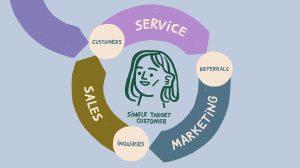Written by Amal Abdalhay
In this blog post, we’ll teach you how to balance SEO and branding with original examples of how we put these techniques into practice for our clients.
As we live in a digital world, the relationship between online marketing and your business is like the one between nutrients and humans; they’re essential for survival. However, the way you consume those nutrients is up to you. You can take them as supplements, cooked foods or raw, and the benefits will vary. The same goes for digital marketing; there are many tools to market your business online, and you’re free to choose whichever works best for your business goals.
Search engine optimization (SEO) is one of those marketing tools. Although it has an undeserved reputation for being robotic and allowing no room for branding and creativity, at Findable Digital Marketing, we believe otherwise.
In this blog post, we’ll show you how we take a creative and anything-but-robotic approach to balance SEO with branding Afraid of using too many keywords? We have a workaround for that. Don’t want to buy empty backlinks? We have a better alternative. Think it’s tacky to ask clients for Google reviews? Read on to learn how we do it with grace.
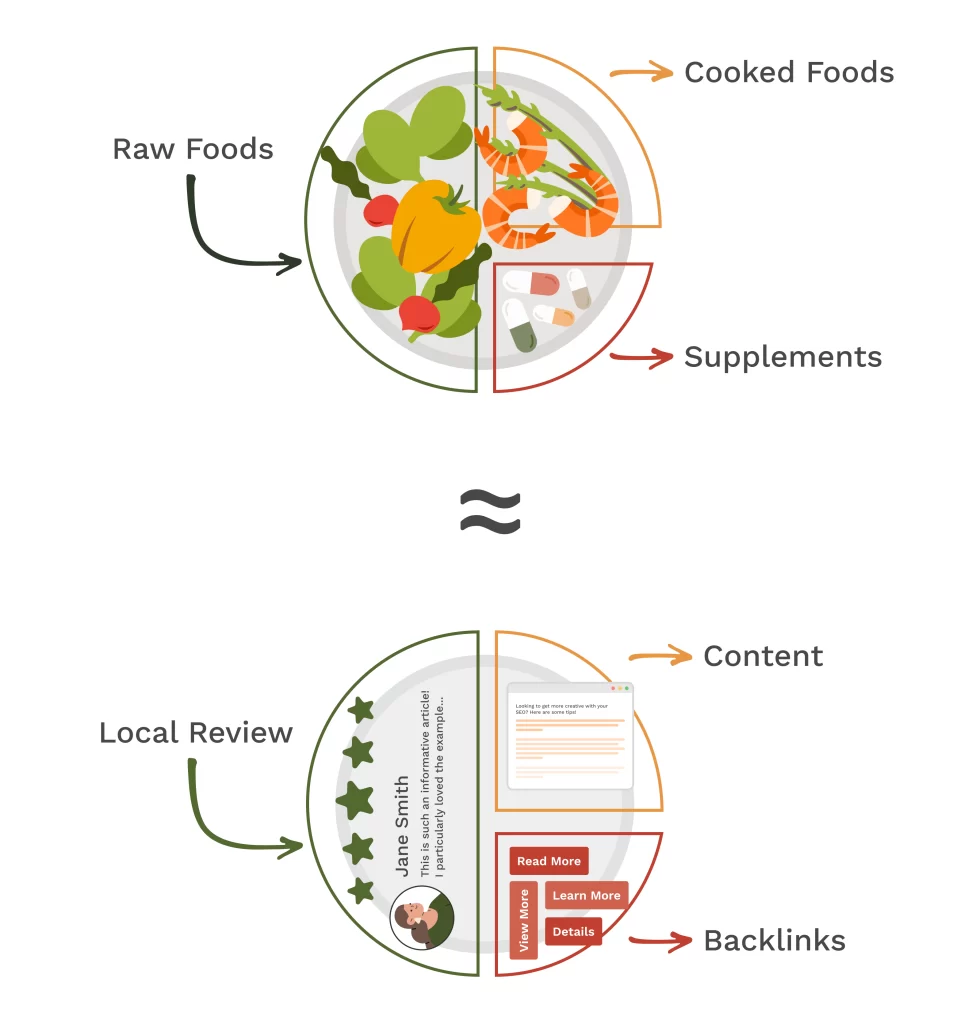
Jump To
- SEO in a Nutshell
- Creative Strategies to Balance SEO and Branding
- A Little Creativity Goes a Long Way
SEO in a Nutshell
Search engine optimization (SEO) is a form of digital marketing. It refers to techniques that help your website rank higher in search engines to gain more traffic. Google, for example, evaluates websites based on over 200 ranking factors that we can group into five:
- Content
- Backlinks
- Local SEO
- Technical
- Design & UX
SEO can get a bad rap for being a little formulaic. Still, there’s so much more room to play than business owners realize because you don’t have to satisfy each ranking factor equally; you can do more of one or the other. You can play with different combinations to get similar results without compromising your likelihood of ranking page 1.
The three ranking factors we’ll cover in this article are content, backlinks, and local SEO. We should also mention that considering technical SEO and UX design is equally important, but today we’ll cover these three. In the following sections, we’ll show you how to use SEO strategies and tactics to grow your business without sacrificing your brand voice, tone, style, and creativity.
Creative Strategies to Balance SEO and Branding
Choosing SEO as a marketing strategy is like planting an apple tree. Just as you don’t sow seeds one day and reap apples the next, we don’t just add some code to the backend of your website one day and generate traffic and sales inquiries the next. It takes time.
Here are some examples of our SEO strategies that helped our clients grow their businesses and sales:
- You can humanize SEO content.
- Take the long road with backlinks – it’s worth it.
- Be local and get reviews.
You Can Humanize SEO Content
Let’s say you’re considering a house renovation. You first go on Google and type:
- “how much does it cost to renovate a house in toronto” or
- “interior designer toronto.”
The results you see on Google are not random. Those websites either paid to be there or have been optimized for search engines. One way to optimize a website is through SEO-friendly content; if you want to come up on the first page of Google for “interior designer toronto,” you have to use those words, which we call keywords, on your website.
The more SEO-friendly content your website has, the more likely you’ll rank on the first page of Google, and the more likely you’ll get website traffic and sales inquiries. However, designers often want minimal content and text on their websites so that their visual portfolio shines – we get it! But this conflicts with SEO best practices because Google cannot read images without content or keywords, and with visuals dominating the site, the algorithm doesn’t have enough information to know how or what to rank your website for.
The best way to reach the front page of Google is to have a healthy balance of written and visual content. For our clients, we create this balance through case studies using before and after sections; it’s a space where we explain the creative process behind their work and show it simultaneously.
Another reason for not taking the plunge into SEO-friendly content is that it could easily sound robotic and fluffy. Of course, that’s true when you write content to fill space. But for us, creativity is at the forefront of writing. Our process results in high-quality, humanized content. Our Writer, Molly Randhawa, shares some tips on how she combines creativity with SEO-friendly content:
“Trying to combine SEO yet stay true to a client’s brand voice can be challenging at first; it’s easy just to plug in keywords and have your copy sound dry and robotic. Something that has always worked for me is researching extensively. It sounds simple, but knowing what keywords to use and integrating them naturally helps me be more creative. I’ll write my copy, and then I’ll go in and pretend I’m having a conversation with my reader. I’ve found that writing how I talk helps create a more fun, flexible copy without compromising your SEO.”
With all that said, SEO is not only content and keywords; they are helpful for SEO, SEO guidelines do show a strong correlation between high-quality content and high rankings on Google, but it’s not the be-all-end-all. You can adjust and reduce the content on your website as long as you change your expectations because results will vary, and compensating on other areas like paid ads becomes your alternative strategy for online visibility.
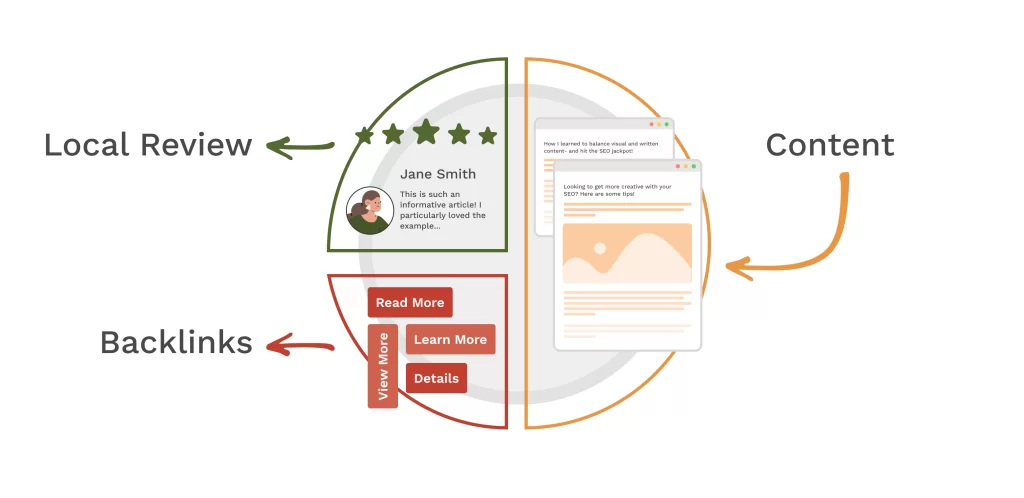
Take The Long Road With Backlinks – It’s Worth It
Backlinks are hyperlinks that take users from one website to another website. Backlinks are valuable for SEO because they represent a vote of confidence. Each of these “votes” tells search engines: this page is credible, helpful, and valuable.
However, getting backlinks can be a repetitive slog of a task, especially for design firms. There are no shortcuts to earning backlinks; it’s a manual process. You must create a contact list and manually reach out to other websites to notice your high-quality content. One question we often get is: how long it takes to build backlinks?
The reality is it takes time if you’re aiming for quality backlinks. In the end, you can pay your way to almost anything, but that’s not what we do or recommend. Paying for backlinks is against Google’s guidelines. It’s a black-hat SEO method and could risk penalization. High-quality organic backlinks indicate that other sites vouch for your site. It’s what Google’s algorithm prioritizes: high-quality, relevant content.
Our SEO Manager Filomena Paoletta shares some creative SEO strategies regarding link building:
“We build backlinks through PR campaigns. We may take the long road with this; it’s a long-term play; we spend the time creating high-quality content and pitching it to quality sources, and results won’t happen overnight, but when they do come, you reap great benefits from this method. Of course, you can have tons of backlinks from spammy, low-quality websites. But they won’t be as impactful as a few backlinks from authoritative sites relevant to your business. We don’t pay to get backlinks on any website; the quality matters.”
Another question we get is: how many backlinks to rank?
The answer is a competitive amount. Knowing what your competitors are doing is vital to building your strategy. Look at what your competitors are doing, but don’t copy them; what are they doing right? how can you do better? at Findable Digital Marketing, we always look for ways to make our clients stand out and appeal to more users, and a competitor analysis makes that possible. The next step is building a strategy. Founder of Findable Digital Marketing, Daniela Furtado, suggests that you stick to one strategy for at least six months; after that, you will have some data to see what is working so you can put more effort into it. Because strategies are just ideas, you have to put them into action to get feedback from the market.
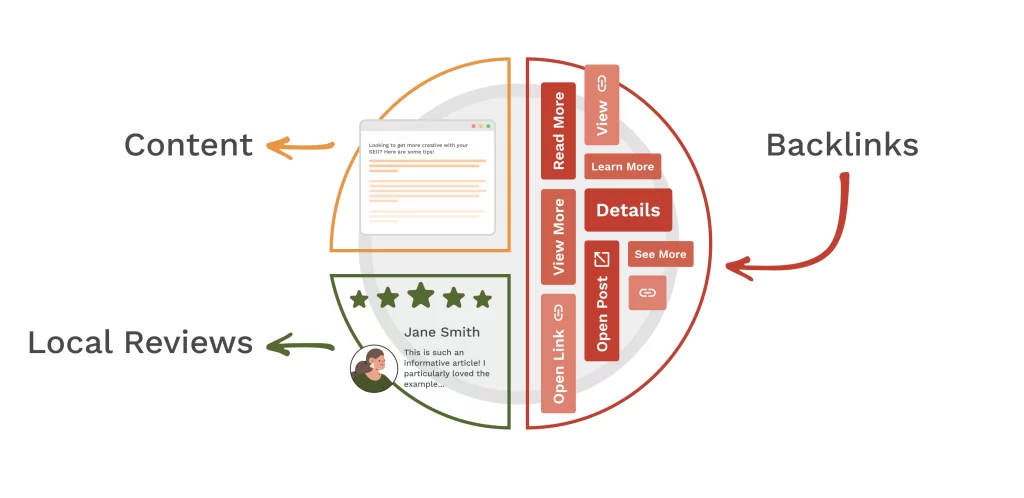
Be Local and Get Reviews
Local search is when someone searches for services or products near them or in a specific location, and local SEO is optimizing a local business for location-specific keywords such as “paint store near me” or paint store in Brooklyn”
Local SEO is a powerful marketing tool that small businesses can use to reach more potential customers: 46% of all Google searchers are looking for local information, and Google’s algorithm assumes that local listings are more likely to be relevant to web searchers. However, there’s more than adding your business to Google Maps and listing your hours and location. When it comes to local SEO, this is how Filomena Paoletta our SEO manager works her creative skills to make our clients stand out from the crowd:
“We ask for high-quality photos to update our client’s business page – this makes their page stand out and showcases their work. We try to find ways to entice users to search for this service. What matters to them, what are they looking for, and how can we use Google to showcase this? We try to think of both the UX (user experience) and what Google wants and ask how we can blend the two to make both Google and the searcher happy”.
A big part of local SEO is Google reviews, and we know that asking for reviews is not everyone’s cup of tea; some might find it awkward or tacky. But here’s how creativity can save the day: provide excellent customer service! Providing exceptional customer service and having a close relationship with your clients makes it easier to find opportunities to ask for reviews in a natural way. Leverage moments of customer happiness when they are more inclined to give a good review.
If your service is sensitive, asking customers to leave reviews can compromise their privacy. When that’s the case, try to seek out reviews from employees, partners and suppliers. Alternatively, compensate for the lack of local SEO with other strategies like the ones we mentioned before.
Local SEO might also be a hard option for businesses that operate from home and don’t want their address showing on Google. In those cases, a creative SEO workaround is to purchase a virtual membership at a local co-working space. For less than $100 a month, a virtual membership allows you to use their address for public-facing purposes like your website or Google Maps listing.
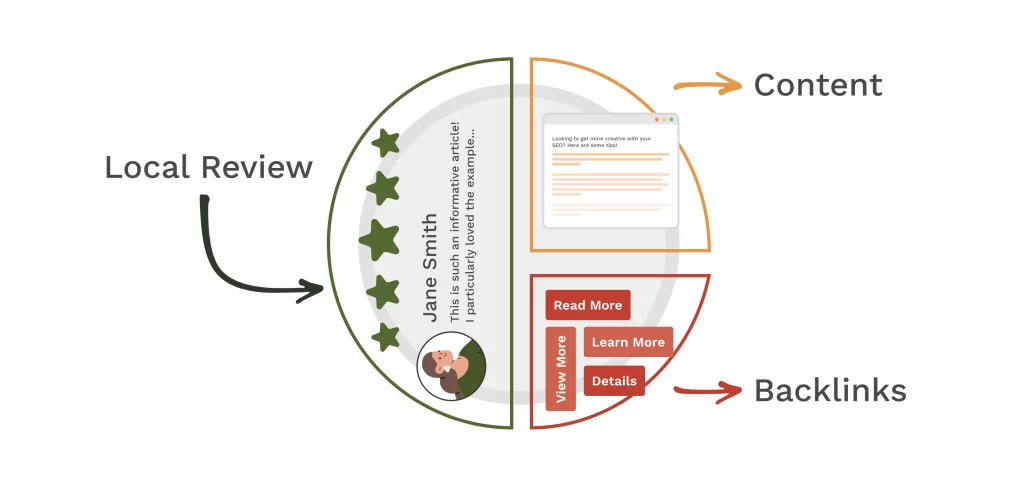
A Little Creativity Goes a Long Way
Without strong digital marketing, your business can quickly fade into the background. At Findable Digital Marketing, we recommend marketing strategies that help our clients grow their businesses online. In this day and age, our recommendation is SEO. As you can see, there are many ways you can flex your creative muscles with SEO to achieve your business goals and connect with prospective clients effectively.
How to Work with Us
We help design-build firms increase website traffic by 5 times and sales inquiries by 3 times. Hire us to train you on our program, or do it all for you.
Check out the five questions to ask yourself before hiring an agency. If you think we’d make a good team, contact us today!
Amal Abdalhay
Amal Abdalhay is a content writer. With a background in journalism and design, she combines both expertise to plan and write content for all our clients at Findable Digital Marketing. On the weekends, catch Amal between coffee, pastries, family and friends. She is based in Toronto, Canada.
 Personal Branding for Architects and Interior Designers
Personal Branding for Architects and Interior Designers The Good, The Bad and The Ugly of Keyword Data
The Good, The Bad and The Ugly of Keyword Data A Cheat Sheet on How to Write a Service Page
A Cheat Sheet on How to Write a Service Page